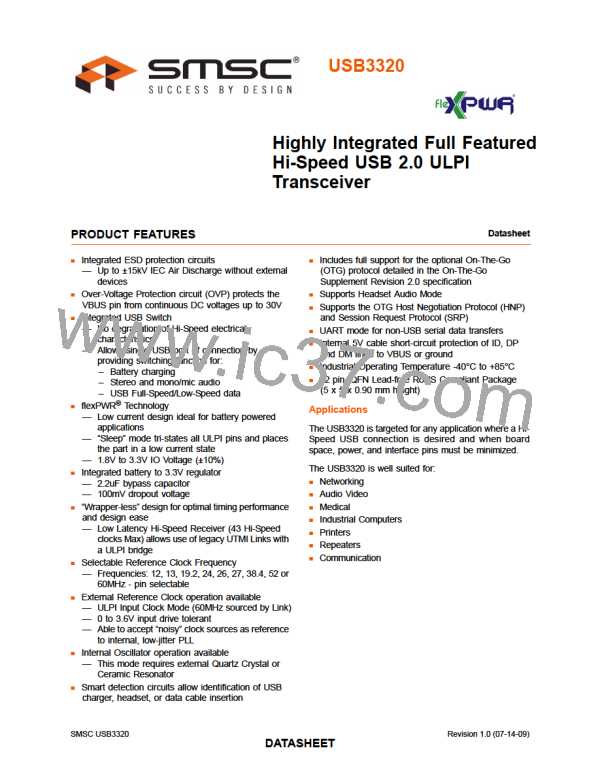Highly Integrated Full Featured Hi-Speed USB 2.0 ULPI Transceiver
Datasheet
T0
T1
T2
SUPPLIES
STABLE
REFCLK valid
REFCLK
RESETB
DATA[7:0]
DIR
PHY Tri-States
PHY Drives Idle
PHY Drives High
IDLE
RXCMD
IDLE
PHY Tri-States
LINK Drives Low
STP
TSTART
Figure 5.9 ULPI Start-up Timing
5.6
USB On-The-Go (OTG)
The USB3320 provides full support for USB OTG protocol. OTG allows the USB3320 to be dynamically
configured as a host or device depending on the type of cable inserted into the receptacle. When the
Micro-A plug of a cable is inserted into the Micro-AB receptacle, the USB device becomes the A-
device. When a Micro-B plug is inserted, the device becomes the B-device. The OTG A-device
behaves similar to a Host while the B-device behaves similar to a peripheral. The differences are
covered in the “On-The-Go Supplement to the USB 2.0 Specification”. In applications where only Host
or Device is required, the OTG Module is unused.
5.6.1
ID Resistor Detection
The ID pin of the USB connector is monitored by the ID pin of the USB3320 to detect the attachment
of different types of USB devices and cables. For device only applications that do not use the ID signal
the ID pin should be connected to VDD33. The block diagram of the ID detection circuitry is shown in
Figure 5.10 and the related parameters are given in Table 4.7.
SMSC USB3320
Revision 1.0 (07-14-09)
DATA3S3HEET

 SMSC [ SMSC CORPORATION ]
SMSC [ SMSC CORPORATION ]